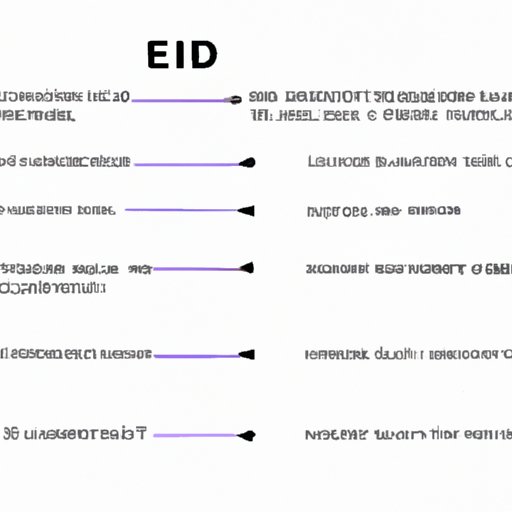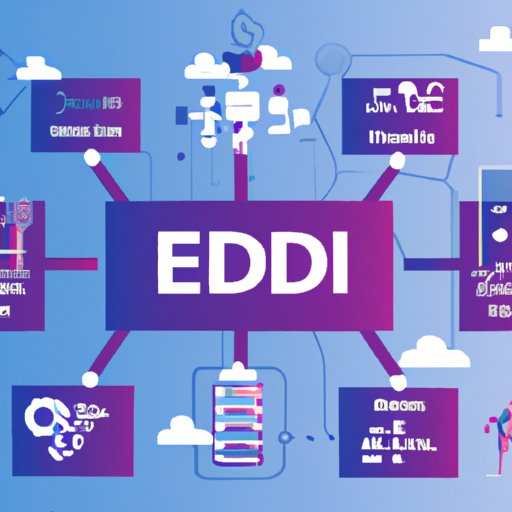Introduction
Electronic Data Interchange (EDI) technology has revolutionized the way businesses communicate and transact with each other. EDI is a set of standards that allows two organizations to exchange business documents, such as purchase orders and invoices, electronically. This technology streamlines document handling, improves accuracy, and reduces costs, making it an essential tool for businesses of all sizes.

How EDI Technology Works: An Overview
At its core, EDI technology consists of three components: software, communications, and services. The software is used to create and manage documents, while the communication infrastructure enables secure transmission of documents between trading partners. Services, such as mapping and translation, are also available to help ensure successful document exchanges.
EDI documents are exchanged using a variety of formats, including ANSI X12, EDIFACT, and XML. Each format has its own set of rules and guidelines that must be followed in order for documents to be successfully transmitted. In addition, there are several common EDI standards, such as UCC/EAN 128 and GS1, that must be adhered to when exchanging documents.

Benefits of Implementing EDI Technology in Your Business
EDI technology offers numerous benefits for businesses of all sizes, from improved accuracy and efficiency to cost savings and enhanced customer service. By automating manual processes, EDI technology eliminates the need for paper-based document handling, which reduces errors and saves time. It also reduces processing costs, as there is no need for manual data entry or physical storage of documents.
In addition, EDI technology helps to improve customer service by allowing businesses to quickly and accurately fulfill orders. With EDI, customers can receive their orders faster and with fewer mistakes, leading to increased satisfaction and loyalty.

EDI Technology and Its Impact on Supply Chain Management
EDI technology has had a profound impact on supply chain management. By automating processes and providing real-time visibility into data, EDI technology makes it easier for businesses to track and manage their inventory. It also streamlines order processing, allowing businesses to quickly and accurately fulfill customer orders.
In addition, EDI technology provides businesses with greater control over their supply chain. By enabling automated data exchange between trading partners, it eliminates the need for manual data entry and ensures accuracy. This, in turn, leads to more efficient operations and improved customer service.
A Guide to Choosing the Right EDI Technology Solution for Your Business
When it comes to choosing the right EDI technology solution for your business, there are several factors to consider. First, you should evaluate your needs and determine the types of documents you will be exchanging. You should also compare features and costs of different solutions, as well as analyze implementation strategies.
It’s also important to consider the level of support offered by the provider. A good provider will offer comprehensive support, such as training and technical assistance, to ensure that your EDI implementation is successful.
Exploring the Future of EDI Technology and What It Means for Your Business
As EDI technology continues to evolve, businesses must stay ahead of the curve to remain competitive. One of the most significant developments in recent years has been the emergence of cloud-based solutions. Cloud-based EDI solutions offer the same features and benefits as traditional EDI systems, but with added flexibility and scalability.
In addition, the adoption of artificial intelligence (AI) and machine learning is transforming the way EDI technology is used. These technologies enable businesses to automate document handling and gain deeper insights into their data, leading to improved accuracy and efficiency.
Finally, the use of EDI technology is expanding globally. As more countries adopt standardized EDI standards, businesses will be able to conduct cross-border transactions faster and more efficiently.
Conclusion
EDI technology is an essential tool for businesses of all sizes. It streamlines document handling, improves accuracy, and reduces costs, making it a valuable asset for any organization. By understanding the basics of EDI technology and its implications for businesses, companies can stay ahead of the curve and make the most of this powerful technology.
In addition to the benefits outlined above, businesses should also consider the potential challenges they may face when implementing EDI technology. By evaluating their needs, comparing features and costs, and analyzing implementation strategies, businesses can select the best EDI technology solution for their needs.
Finally, as EDI technology continues to evolve, businesses should explore emerging trends such as cloud-based solutions, AI and machine learning, and global expansion. Doing so will ensure that they remain competitive and are able to take advantage of the latest advances in EDI technology.
(Note: Is this article not meeting your expectations? Do you have knowledge or insights to share? Unlock new opportunities and expand your reach by joining our authors team. Click Registration to join us and share your expertise with our readers.)
